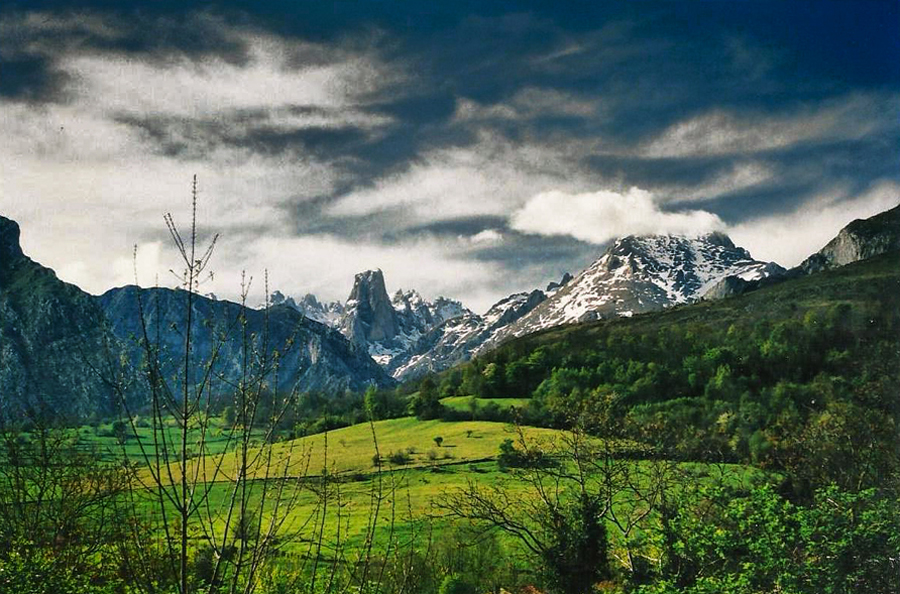EXTRAORDINARY EXPLOSIONS TO SEE NOW

This has been a powerful year for volcanoes. While Hawaii’s Kilauea volcano has been erupting continuously since 1983, it recently caught volcanologists by surprise on May 4th, when massive eruptions from its Pu'u 'Ō'ō vent, poured into residential areas. Guatemala’s Fuego volcano eruption, just a couple of weeks ago, wiped out villages and left a trail of death.
Indonesia’s Mount Merapi volcano has also been erupting since mid-May, most recently on June 1, sending plumes of smoke almost 4 miles into the air.
Typically, there are about 10-20 volcanoes in eruption around the world, at any given time, with incredible natural fireworks displays. We only hear about the ones that are particularly dramatic. Although the number of eruptions per year has increased as the earth’s temperature has increased, according to this study
Even Yellowstone’s Steamboat Geyser has been shooting up with greater frequency and vigor.
And while volcanoes can be dangerous and destructive, they are also beautiful and productive.

We’ve taken a look at volcanic mountains that have chilled out since their fiery days. Some are dormant and some are extinct. After their extraordinary explosions and have left us with a legacy of beauty.

Many of the volcanoes on our list are stratovolcanoes, also known composite volcanoes, which are shaped like steep cones, built up by many layers (strata) of hardened lava, tephra, pumice and ash. Some have collapsed summit craters, called calderas.
Check out the beautiful volcanoes below and add some to your beautiful travel bucket list.

Mount Semeru, aka Gunung Semeru, is an active stratovolcano volcano located in East Java, Indonesia. It is the highest mountain on the island of Java. Mount Bromo is another beautiful volcano nearby.
At least 55 eruptions have been recorded since 1818 -- almost constant eruption since 1967. At times, small eruptions happen about every 20 minutes.
Climbers usually start of at the village of Ranu Pane, to the north.

Lanín, is an ice-clad, cone-shaped stratovolcano straddling two national parks: Lanín in Argentina and Villarrica in Chile. It is estimated that it last erupted about 10,000 years ago.
There are two paths to the summit. One path, on the north, starting at 1,200 metres above sea level near Tromen Lake and the International Mamuil Malal Pass. One path, on the south, starting beside Huechulafquen Lake.
The nearest base towns for climbers are Pucón, in Chile, and Junín de los Andes, in Argentina.

Mount Fuji is an active stratovolcano that last erupted in 1707–1708. It reigns supreme as it stands 3,776.24 m (12,389 ft) tall, just southwest of Tokyo,
This mountain’s cone is exceptionally symmetrical. It is sheathed in snow about 5 months of the year.
Along with Mount Tate and Mount Haku, Mount Fuji is one of Japan's "Three Holy Mountains." It is a UNESCO World Heritage Site, cited for its inspiration to artists and poets.

Mount Teide is a volcano on Tenerife in the Canary Islands, Spain. It tops out at 3,718-metre (12,198 ft) above sea level. Considering measurements from ocean floor, Mount Teide clears 7,500 m (24,600 ft), making it the highest volcano in the world, base-to-peak, outside of the Hawaiian Islands. It is Earth's third-tallest volcanic structure.
Although still active, Teide’s most recent eruption occurred in 1909.
Teide National Park, which surrounds the volcano, spans 18,900 hectares (47,000 acres) and was named a UNESCO World Heritage Site.
Beyond hiking to see amazing terrestrial sites, check out Teide Observatory, a major international astronomical observatory, located on the slopes of the mountain.

Mount Ararat, Turkey’s highest mountain, at 5,165 m (16,946 ft), is a double-peaked stratovolcano, crowned with a beautiful glacier. It appears to have been active during the 3rd millennium BCE, as evidenced by unearthed Bronze Age artifacts and remains, and then again, in 1840, as last recorded.
According to the Book of Genesis (Genesis 8:4), following the great flood, Noah's Ark landed on the "mountains of Ararat" (Biblical Hebrew: הָרֵי אֲרָרָט).
While the mountain is not open to climbers, Ararat is still worth the trip just to gaze up at it’s magnificence and ponder the history of the world.

Licancabur is a stratovolcano that shoots up 5,916-metre (19,409 ft) on the border between Bolivia and Chile. Part of the Andean Central Volcanic Zone, It’s summit crater cradles Licancabur Lake, one of the highest lakes in the world, caps the volcano.
Licancabur was last active during the Holocene era, after the ice ages. While it’s cold and dry on this mountain, there are no glaciers.
Licancabur is considered a holy mountain by the indigenous Atacameno people.

Mount Kilimanjaro, in Tanzania, is a stratovolcano comprised of three volcanic cones, "Kibo," which is dormant, and "Mawenzi" and "Shira," both of which are extinct. It is the highest mountain in Africa, about 4,900 metres (16,100 ft) from its base to 5,895 metres (19,341 ft) above sea level. While it is capped by glaciers, they are shrinking at an alarming rate.

Mount Ngauruhoe is an active stratovolcano in New Zealand. It first erupted only about 2,500 years ago, making it the youngest vent in the Tongariro volcanic complex on the Central Plateau of the North Island. Although seen by most as a volcano in its own right, it is technically a secondary cone of Mount Tongariro. Ngauruhoe erupted 45 times in the 20th century, most recently in 1977.
Ngauruhoe erupted 45 times in the 20th century, most recently in 1977.
The mountain is usually climbed from the western side, from the Mangatepopo track, although it is steep, at a 45 degree incline, and loose tephra is a hazard, particularly in summer.
Mount Ngauruhoe was used as a stand-in for the fictional Mount Doom in Peter Jackson's The Lord of the Rings film trilogy.

Nevado Sajama is an extinct stratovolcano -- the highest peak in Bolivia, in Sajama National Park The treeline on the volcano is as high as 5,200 m above sea level, one of the highest altitudes trees can be found growing anywhere in the world.
If you want to climb, start out at the village of Sajama for the best route.

Parinacota is a dormant stratovolcano that rises 6,380 metres (20,930 ft) above sea level on the border of Chile and Bolivia. Together with Pomerape, it forms the Nevados de Payachata volcanic chain. Part of the Central Volcanic Zone of the Andes.
The volcano formed during the Pleistocene era, forming a large symmetrical cone. It then partially collapsed, just before the Holocene era, forming a massive landslide and Lake Chungará. The last recorded eruption occurred about 200 years ago.

Read more about Explosive Beauty all this week on BeautifulNow. And check out more beautiful things happening now in BN Wellness, Impact, Nature/Science, Food, Arts/Design, and Travel, Daily Fix posts.


- Image: by HuiChieh. “Milky Way above Mount Bromo.” Mount Bromo volcano. East Java, Indonesia.
- Image: by baligraph. Mount Bromo. Indonesia.
- Image: by Stuart Rankin. “Mount Fuji Triptych Right.”
- Image: by Arian Zwegers. “Gunung Bromo, Gunung Batok, and Gunung Semeru.” Gunung Semeru. Java.
- Image: by Rick Sharloch. “Lanin volcano, Chile.”
- Image by Chao-Wei Juan Mount Fuji Japan
- Image: by luscofusco Picos de Europa-Asturias. Volcano Pico de Teide. Tenerife, Spain.
- Image: Great Ararat. Turkey.
- Image: by Florence.S. “La laguna verde au pied du Licancabur à la frontière chilienne.” Licancabur volcano. Bolivia & Chile.
- Image: by Gary Craig. “Mt. Kilimanjaro.” Mt. Kilimanjaro. Tanzania.
- Image: by Chris Stoelting. “Mount Ngauruhoe.” Mt. Ngauruhoe. New Zealand.
- Image: by Katie Wheeler. “Deep reflections Nevado Sajama.” Nevado Sajama. Bolivia.
- Image: by twiga269 ॐ FEMEN. “Parinacota y Lago Chungará.” Parinacota volcano. Bolivia.Image: by Lucas Flavio. “Parinacota - Chungará - Arica, Chile.” Parinacota volcano. Chungará - Arica, Chile.
- Image: by rjcox. “Mt. Ngauruhoe.” Mt. Ngauruhoe. New Zealand.
- Image: by Juan Sepulveda. “Licancabur.” Licancabur volcano. Bolivia & Chile.

